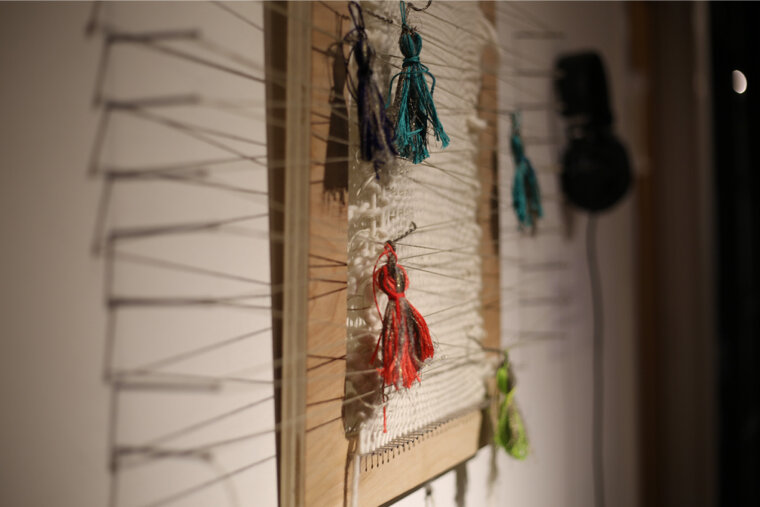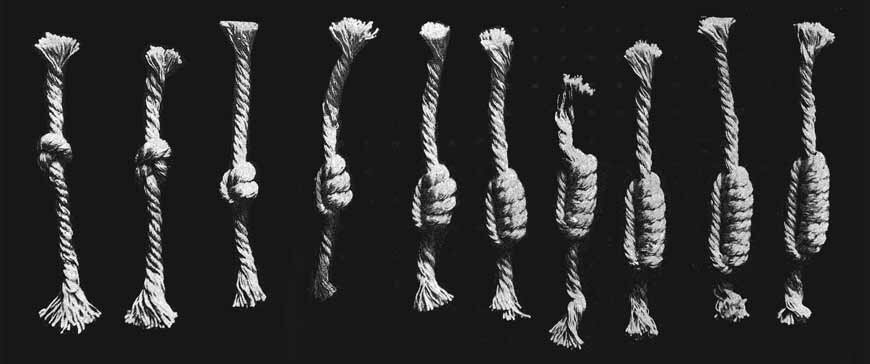QUIPU (2016)
Categories: Storytelling, Physical Computing, Fabrication, Audio
Role: Concept, Design, Production
It's about creating a new language that ties together the old ways of telling and archiving stories with the new ways of consuming them.
I'm fascinated by old record systems, mainly because I think about them as physical representations of data. When I started this project I was intrigue about understanding how these objects were used. They were definitely the technology at that time. The idea of physical objects that could tell you certain type of information, or even stories, seemed really interesting, mainly because of the way we store data nowadays. A really good friend asked me once “Do you think stories have less weight nowadays because they are in the cloud?”. Certainly they do for me. Maybe because I feel it’s easier and faster for them to disappear, and don’t leave any trace behind. The physicality of objects and what materials and texture add to it, was also really interesting. If by touching things we could recall stories, then maybe there’s something about those old record systems that we should re think and bring back.
I was particularly interested in one: Quipu. Quipu (a word that means ‘knot’ in Quechua, an Andean Language) was a record system used in the Incan Empire to keep a record of different things. It was based on knots and cords of different colors. There are still a lot of research going on about if they also kept stories in there, but it is said that the Quipu appeared when the Empire grew so much that they couldn’t keep track of everything.
The stories I wanted to tell
I thought a lot about which were those stories I felt particularly interest in showing. It was in that process that I started thinking more about what has helped in the fast the act of building a collective memoir in different communities. I immediately got into Oral Traditions, and how these stories transmitted from generation to generation shared now only knowledge but also experiences. Some examples were cantos populares, cuentos, mitos, leyendas, poesía. The best things about this was to think about the relationship that is built between the teller and the audience, as well as how the stories being told were not static: they are alive, they breathe with the tellers’ breath and with that, they have survived time. As someone that has worked with video mostly my whole life, I wanted to try something different and work only with voice, with audio.
I also wanted to collect stories that could connect with people. Culture and identity are for me two big topics that are able to connect people and communities. Even if I thought about the future, I wanted a topic that could still be important and that could explain society nowadays. I gathered 5 persons from different countries, that migrated to another place for different reasons. I asked them how did they cultural identity changed when they migrated somewhere else. And each interview showed up a lot of layers we normally don’t see in people, that are related to who they are and how they have rebuild their lives being somewhere else.
The physical design
Inspired by the type of material used in Quipus, and wanting to explore the power of different materials, I decided to weave. Textiles have always had a very important role in the preservation of culture and history. So I made a small loom and started weaving. I didn’t know much about the technical style of weaving, so I started with a simple design. I wanted to create a background where I could later add other elements, so I could have layers, in the same way the stories I collected had them. While I was doing this, I realized that I made a big mistake in the way I was pulling the yarn. I had some parts that were most loose than others, some were so tight that they will start creating a sort of design. The interesting thing was to realize that the weaving was transcribing a story, and that each part of it transmitted something different, depending on the way it was weaved. If we think about written or oral stories, it’s the way we combine the words and the way they are being said that gives meaning to the whole piece.
The interaction
I talked about the important of tactility and tangibility. I made small pompons made of regular thread combined with conductive thread so when people would touch them, they would triggered sound. Using capacitive sensors, I connected the thread to Arduino and then to Max MSP to reproduce the audios. Each pompom contained a different story and the user could go from one to another, and go back if they want to.
Quipu is a physical installation inspired by a recording device used in the Incan Empire made of cords and knotted strings of different colors to capture elements of Oral Traditions. Interaction with it, will reveal daily stories collected from local communities that talk about their cultural identity and their own way of seeing society.
I keep thinking… How do we guarantee to the stored data a long lasting future?
This project was presented in the ITP Winter Show in December 2016.





